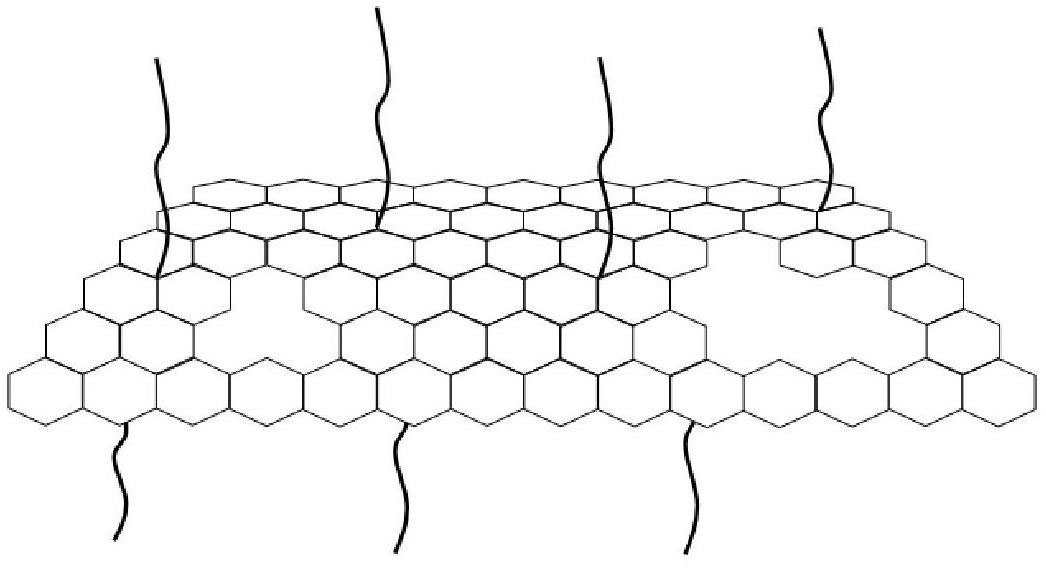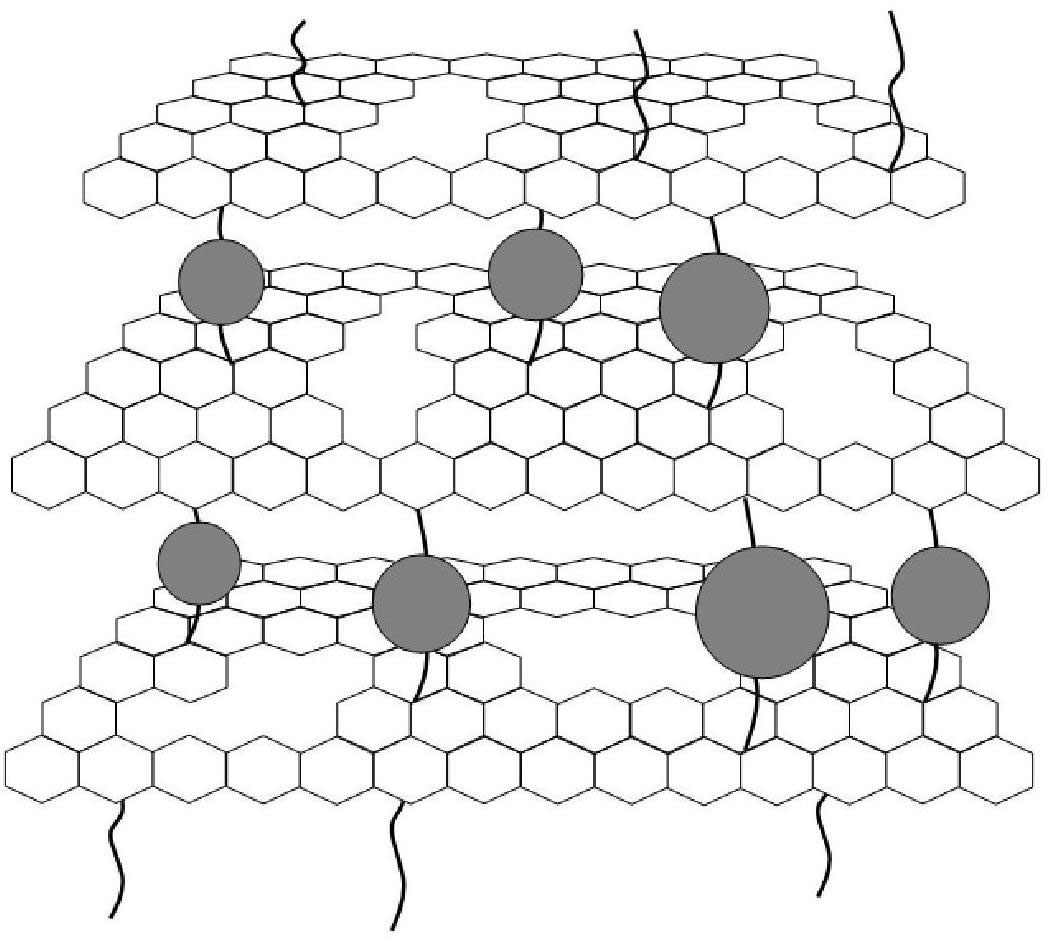Graphene composite material for cathode of lithium ion battery and preparation method of graphene composite material
A lithium-ion battery, graphene-based material technology, applied in battery electrodes, secondary batteries, circuits, etc., can solve the problems of large volume change, low capacity attenuation, small structural change, etc., and achieve simple preparation process and excellent electrical conductivity. , the effect of low price
- Summary
- Abstract
- Description
- Claims
- Application Information
AI Technical Summary
Problems solved by technology
Method used
Image
Examples
Embodiment 1
[0056] 1. Preparation of titanium dioxide / graphene composite material:
[0057] (1) Weigh 1.0g of graphene three-dimensional derivative material (the surface has a large number of micropores with a pore size ranging from 2nm to 100nm), add it to 50ml of concentrated sulfuric acid, slowly add 3.5g of potassium permanganate under stirring, and stir at room temperature for reaction After 0.5 hours, slowly add 100ml of deionized water, dropwise add hydrogen peroxide until no bubbles are generated, filter and wash with deionized water until neutral, and dry to obtain a three-dimensional graphene oxide derivative material. The three-dimensional graphene oxide derivative material obtained by drying is dissolved in an aqueous solution, and an aqueous solution of the three-dimensional graphene oxide derivative material with stable dispersion is obtained by ultrasonication.
[0058] (2) Add titanium tetrachloride to the suspension obtained in step (1) according to the mass ratio of tita...
Embodiment 2
[0062] 1. Preparation of titanium dioxide / graphene composite material:
[0063] (1) Weigh 5.0g of graphene three-dimensional derivative material (its conductivity is greater than 100mS / m), add it to 100ml of concentrated sulfuric acid, slowly add 17.5g of potassium permanganate under stirring, stir at room temperature for 1.5 hours, then slowly add 300ml deionized water, add hydrogen peroxide dropwise until no bubbles are generated, filter and wash with deionized water until neutral, and dry to obtain a three-dimensional graphene oxide derivative material. Dissolving the three-dimensional graphene derivative material obtained by drying in an aqueous solution, and ultrasonically obtaining a dispersed and stable graphene three-dimensional derivative material aqueous solution.
[0064] (2) Add titanium tetrachloride to the suspension obtained in step (1) according to the mass ratio of titanium tetrachloride and graphene oxide of 1:5, and hydrolyze at 60° C. for 2 hours to obtain ...
Embodiment 3
[0067] 1. Preparation of titanium dioxide / graphene composite material:
[0068] (1) Weigh 1.0g of graphene three-dimensional derivative material (its conductivity is greater than 100mS / m), add it to 50ml of concentrated sulfuric acid, slowly add 4g of potassium chromate under stirring, stir and react at room temperature for 5 hours, then slowly add 100ml to remove Ionized water, add hydrogen peroxide dropwise until no bubbles are generated, filter and wash with deionized water until neutral, and dry to obtain a three-dimensional graphene oxide derivative material. Dissolving the three-dimensional graphene derivative material obtained by drying in an aqueous solution, and ultrasonically obtaining a dispersed and stable graphene three-dimensional derivative material aqueous solution.
[0069] (2) Add titanium tetrachloride to the suspension obtained in step (1) according to the mass ratio of titanium tetrachloride and graphene oxide of 1:5, and hydrolyze at 60° C. for 2 hours to...
PUM
| Property | Measurement | Unit |
|---|---|---|
| Conductivity | aaaaa | aaaaa |
| Aperture | aaaaa | aaaaa |
| Specific surface area | aaaaa | aaaaa |
Abstract
Description
Claims
Application Information
 Login to View More
Login to View More - R&D
- Intellectual Property
- Life Sciences
- Materials
- Tech Scout
- Unparalleled Data Quality
- Higher Quality Content
- 60% Fewer Hallucinations
Browse by: Latest US Patents, China's latest patents, Technical Efficacy Thesaurus, Application Domain, Technology Topic, Popular Technical Reports.
© 2025 PatSnap. All rights reserved.Legal|Privacy policy|Modern Slavery Act Transparency Statement|Sitemap|About US| Contact US: help@patsnap.com



